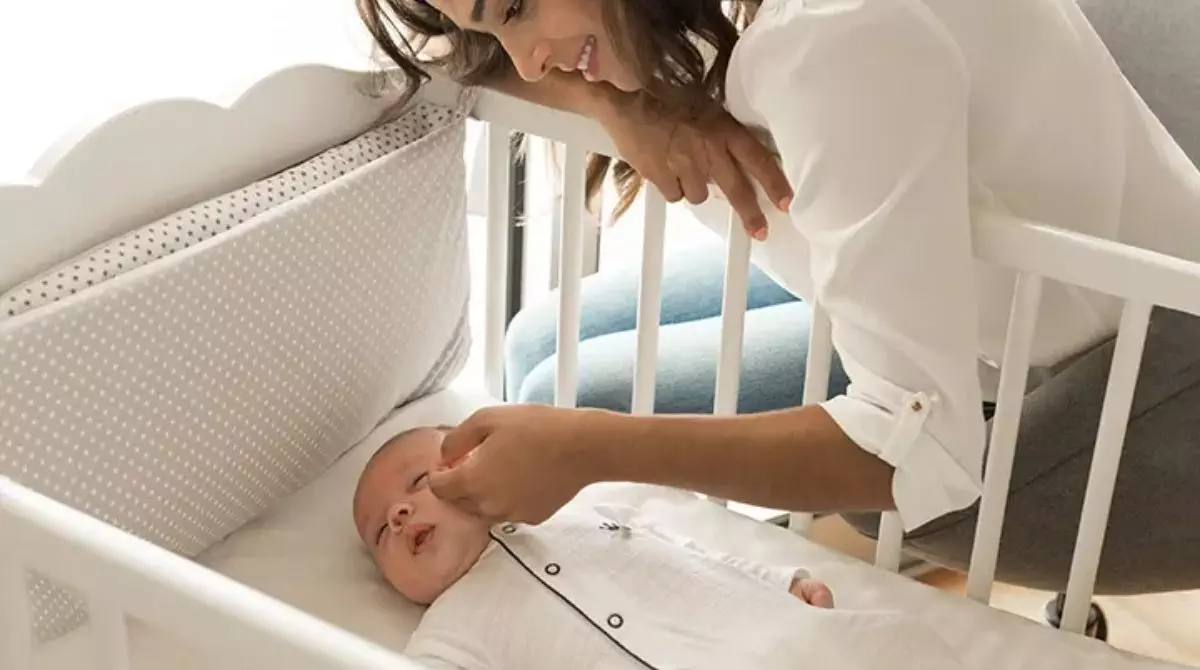There are several crucial recommendations to be aware of and follow about safe sleep for babies, as well as some crucial questions to be focused on. You’re not the only parent who wants to know when to move your baby into their own room, what to wear for a newborn to sleep in, and whether it’s safe to co-sleep. We have the answers to all of these queries and many more, along with a list of extra suggestions to help ensure that your precious baby sleeps safely.
The Importance of Safe Sleep Habits
Whether your baby is sleeping during the night or during a nap, you can protect them from potential risks by practicing safe sleep habits. Taking safety measures to prevent falls, choking, suffocation, and SIDS (Sudden Infant Death Syndrome) is part of safe sleeping.
The US Centers for Disease Control and Prevention estimate that 3,500 babies in the US die from sleep-related causes each year.
You can help avoid these risky consequences by using safe sleep practices for infants. For information and advice on the safest sleeping practices for your newborn and as they get older, continue reading.
The moment your baby falls asleep is lovely, but if your paranoia as a new mother sets in, you might find yourself worrying all the time that they are still breathing.
The Risks of Co-Sleeping

Parents frequently ask themselves if they can safely sleep in their bed with their infant. Because it puts your baby at a significantly higher risk of SIDS, suffocation, and strangulation, co-sleeping or bed-sharing is not advised and is not thought to be safe. Among the risks of co-sleeping are:
- Your child rolling out of bed in the middle of the night
- You unintentionally fall asleep on top of them
- The baby becomes tangled in the blankets or sheets.
It’s recommended to put your child in their own crib and keep the crib in the same room as you to promote safe sleep for babies and infants. Just keep in mind that sharing a room with your infant is safe, but sharing a bed or co-sleeping is not.
How Much Time Is Enough for Your Baby to Sleep in Your Room?
For the first 6 to 12 months of its life, let your little snoozer sleep in your room. SIDS risk can be reduced by up to 50% by keeping your baby in your room but not in your bed, and letting them sleep in their own bassinet or crib. Keeping an eye on, feeding, and relaxing your infant through the night may be much simpler with this arrangement.
What Should a Newborn Wear for Safe Sleep?
Avoiding overdressing your child when you put them to sleep is another recommended practice to encourage safe sleep for babies. So where exactly should a newborn sleep? Maintain a comfortable yet cool temperature in the room and dress your baby in no more than one extra layer than you would wear.
Look for symptoms of excessive heat in your child, such as sweating or feeling warm to the touch, when you check on them at night. To help keep your baby from overheating while they sleep, it’s best to leave their head and face uncovered.
Guidelines of Safe Sleep for Babies
Verify if Your Crib Follows with Safety Standards
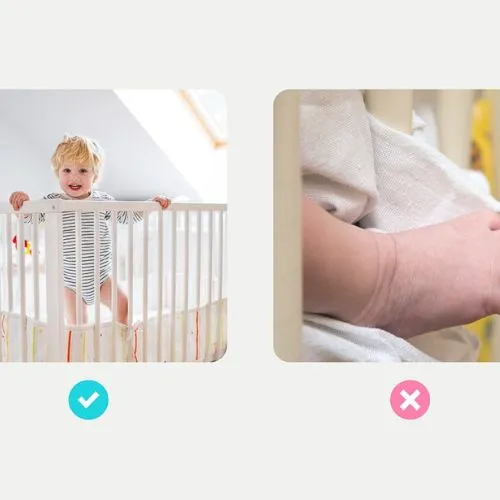
Make sure the crib, portable crib, bassinet, or play yard you’re using complies with the Consumer Product Safety Commission’s (CPSC) safety requirements. Your parents may have used a crib with a drop railing when you were a baby, but since 2012, the CPSC has prohibited cribs of that kind due to research showing that cribs with lowered sides significantly increase the risk of suffocation and strangulation for infants.
Make Use of a Firm Sleep Surface
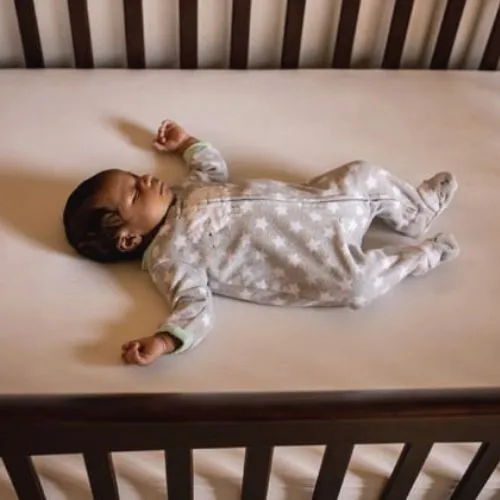
While adults might love their pillowtop mattresses, babies should always sleep on a firm surface that is a hard surface that won’t give way under their weight when they’re on it. That might be a particular kind of play yard, bassinet, or crib that has a tightly fitting sheet and a firm mattress made for it. Additionally, you want to ensure that there are no significant spaces between the mattress and the crib’s sides. A properly fitted mattress should not allow you to slide more than two fingers along the sides.
Baby Should Sleep on Their Back
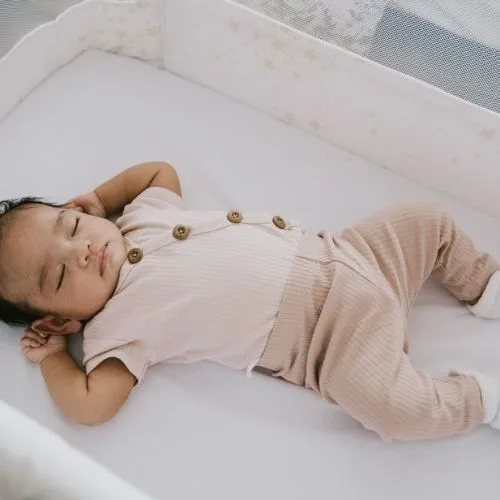
Whether your child is sleeping on their back or on their stomach, it doesn’t matter; always put them to sleep on their back. One of the most crucial pieces of advice for safe sleep for babies is this one. In the past, parents would place their newborns on their tummies out of concern that they might choke on their spit-up, but the AAP assures parents that the anatomy of the baby’s airway and gag reflex will guard against that happening. Babies should always be put on their backs, even if they have reflux. Studies reveal that babies who sleep on their backs get better airflow and are far less likely to suffer from SIDS than babies who sleep on their sides or stomachs, where it is easier for them to roll onto their tummies.
Place Only the Baby in the Crib, Nothing Else
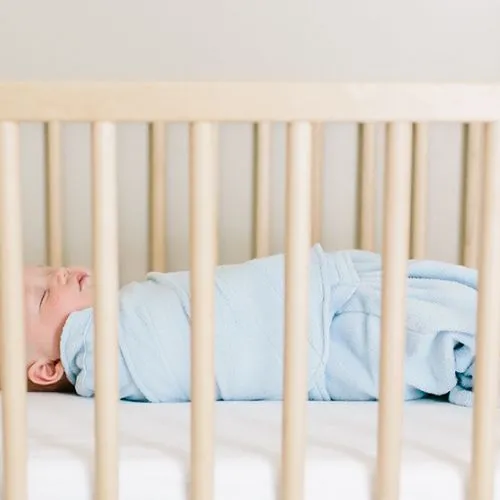
Nothing should be in the crib when the baby is sleeping, aside from the fitted sheet, mattress, and yourself. Thus, no crib bumper pads, pillows, blankets, or toys are allowed. Sure, a quilt over the crib rail and a plush bear tucked into the corner might make your nursery photos extra cute, but when it’s time for the baby to go to sleep, these items should all be taken out to prevent suffocation, strangulation, and entrapment. Wearable blankets, which are fabric sacks with or without arms that you can zip your baby into to prevent loose bedding from covering their face, are a safe option if you’re concerned that your baby might get cold.
Try Giving the Infant a Pacifier
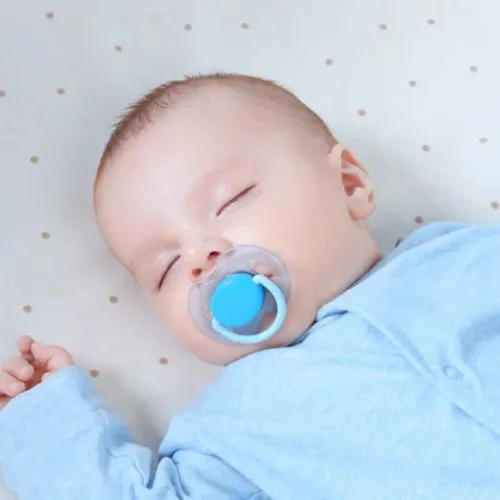
Giving your child a pacifier has been shown to lower the risk of SIDS, even if the pacifier falls out of their mouth after they fall asleep. However, it is by no means necessary. It is advised to wait to introduce the pacifier if you are breastfeeding until both you and the baby get the hang of it, which usually takes two to three weeks. Also, don’t worry if your child just doesn’t enjoy sucking on a pacifier.
Proceed to Swaddle Your Child
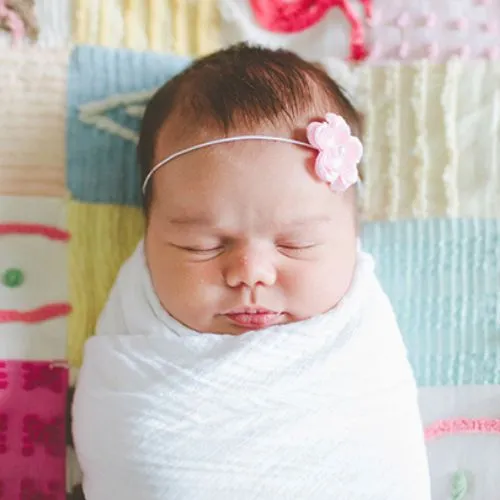
While not every baby loves to be swaddled, or wrapped up burrito-style, you can rest assured that the American Academy of Pediatrics (AAP) says it’s okay to put your baby to sleep in a swaddle. This is excellent news since swaddling, which simulates the closeness of the womb, can promote deeper sleep in infants. Just be careful how you’re swaddling the infant. Since they are less likely to become loose bedding in the crib than a simple blanket, I always suggest swaddling your child with a zip or velcro closure. Your baby should always be swaddled on their back, and the wrap should not be too tight to prevent the infant from moving its hips or breathing freely. A hand should be able to pass between the swaddle and the baby’s chest, even with a snug fit, so that parents can take deep breaths.
The moment your baby starts to struggle to roll over or break free from the swaddle, it’s time to stop using it. You don’t want your child to roll onto their stomach and be unable to get back onto their back or to sleep with loose blankets.
Remove All Wires and Cords Next to the Crib
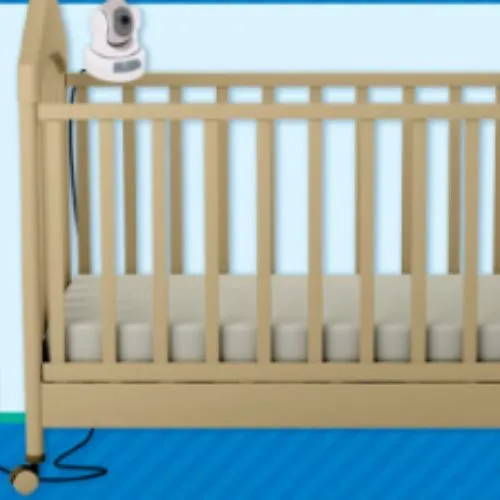
Remove any electrical cords or window cords that hang near your baby’s crib to help ensure safe sleep. Your child could suffocate or become tangled in them. This includes the wires for your baby monitor.
Keep the Baby’s Room Cool
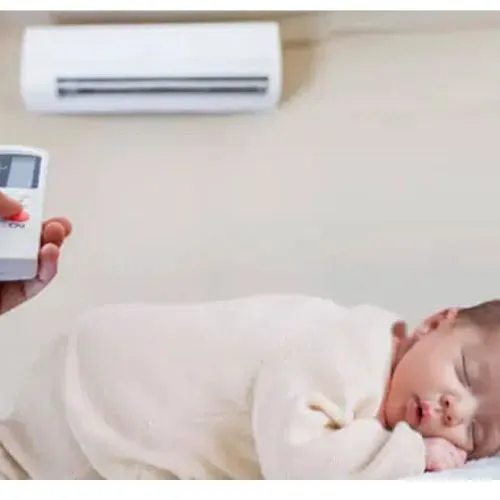
While it seems reasonable to want to ensure that your infant stays warm throughout the night, research indicates that sleeping in a hot room raises the risk of SIDS by approximately 4.5%. Maintain a temperature of 68 to 72 degrees Fahrenheit in your baby’s room to ensure safe and comfortable sleeping practices.
It’s advised to dress the baby in layers that resemble your own before making an assessment. Baby will probably feel more at ease in a onesie and a light swaddle if you’re using a sheet and a T-shirt. Put your infant in a warm sleep sack and thick pajamas if you’re wearing heavy pajamas underneath a comforter, then check on them. Feel the baby’s back and chest to see if they’re comfortable; they should feel warm, not cool. The baby needs to shed a layer if you notice signs like sweaty hair, a flushed face, or rapid breathing. Add an undershirt, thicker pajamas, or a warmer sleep sack if they’re too chilly, but keep in mind that loose blankets shouldn’t be placed in the crib.
Let Your Baby Sleep in Your Room
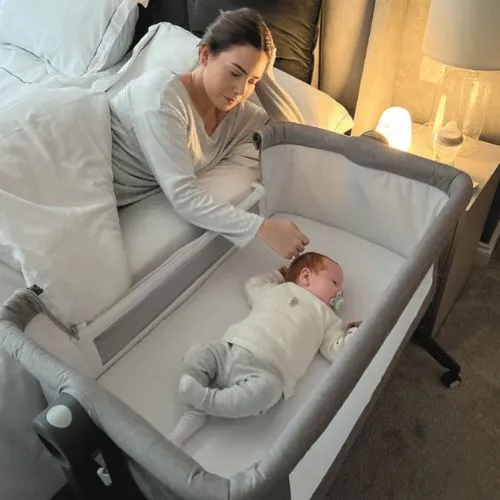
Placing your baby’s sleep area in your bedroom for the first six months, if not a year, is an easy way to reduce the baby’s risk of SIDS—by a whopping 50%, according to the AAP. The play yard, crib, or bassinet should be placed close to your bed. It will be simpler for you to feed, calm, and watch over the infant.
Baby Should Only Be Placed in Your Bed for Comfort or Feeding
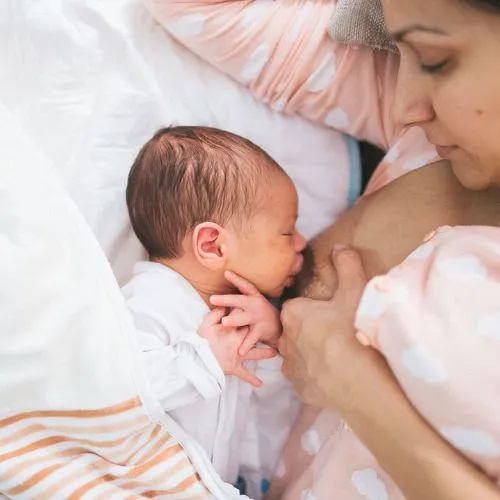
While room-sharing is encouraged by the AAP and CDC, bed-sharing is strictly forbidden because it increases the risk of sleep-related death for the infant. Reposition the infant in their own sleeping area after you’ve finished nursing or comforting them. The AAP advises making sure there are no pillows, sheets, blankets, or other items that could cover your child’s face and head or cause them to overheat in case you fall asleep with your baby still in bed. Of course, a lot of new moms are struggling with exhaustion. Return the infant to their own bed as soon as you awaken.
Final Word
Babies sleep a lot. The American Academy of Pediatrics (AAP) states that an infant’s optimal sleep duration during a 24-hour period is between 14 and 17 hours. For this reason, it’s crucial that parents set up a safe sleep fo babies space for their child. Knowing that you’ve given your baby a safe place to sleep will make it easier for you to sleep as well. By using these above-discussed strategies, you can make sure your infant sleeps safely.

